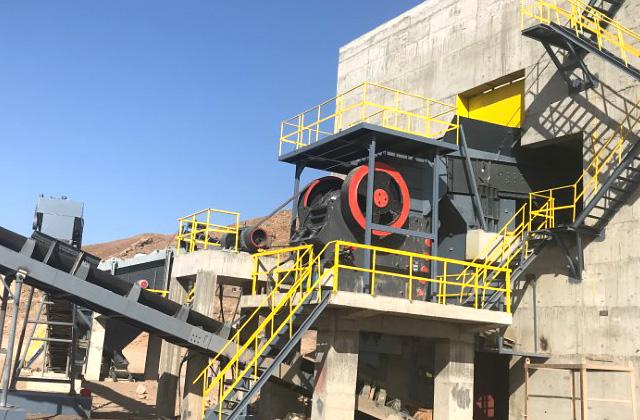A 120 TPH stone crushing production line typically consists of a vibrating feeder, primary crusher (jaw crusher or impact crusher), secondary crusher (cone crusher or impact crusher), vibrating screen, and several belt conveyors. The specific configuration can vary depending on the material properties, output requirements, and site conditions. Here’s a detailed overview of each component:

1. Vibrating Feeder:
- The vibrating feeder transports the raw materials from the hopper into the jaw crusher evenly and continuously. It ensures a steady feed rate to the primary crusher, enhancing efficiency and minimizing blockages.
2. Primary Crusher:
- Jaw Crusher: Widely used for coarse crushing of large stones, the jaw crusher breaks down the raw material into manageable sizes. It has a high reduction ratio and is capable of handling various types of rocks and ores.
- Impact Crusher: Suitable for softer materials or when a cubical-shaped product is desired, the impact crusher uses impact force to break down the stone. It’s effective for medium to hard materials and offers high production rates.
3. Secondary Crusher:
- Cone Crusher: Used for finer crushing after the primary crusher, the cone crusher produces smaller-sized aggregates due to its efficient crushing action. It’s ideal for producing high-quality cubical aggregates for concrete and asphalt production.
- Impact Crusher: As a secondary crusher, the impact crusher provides high reduction ratios and excellent shape characteristics for the final product. It’s versatile and suitable for various applications in construction and mining.
4. Vibrating Screen:
- The vibrating screen separates the crushed materials into different sizes based on the required final product specifications. It efficiently screens out fines and ensures uniformity in the output aggregates.
5. Belt Conveyors:
- Belt conveyors transport the final crushed materials from one stage to another or to stockpiles. They ensure smooth material flow and are essential for optimizing the production process.
Production Process Overview:
- Feeding: Raw materials are fed into the vibrating feeder from the hopper.
- Primary Crushing: The primary crusher reduces the large stones into smaller sizes.
- Secondary Crushing: Depending on the required output specifications, either the cone crusher or impact crusher performs secondary crushing.
- Screening: The vibrating screen separates the crushed materials into different sizes.
- Conveying: Belt conveyors transport the final products to their respective stockpiles or loading points.
Benefits of a 120 TPH Stone Crushing Production Line:
- High Efficiency: Optimized equipment configuration ensures efficient operation and high production rates.
- Versatility: Can process a wide range of materials including hard rocks, ores, and recycled materials.
- Quality Output: Produces uniform aggregates with good shape characteristics, suitable for various construction applications.
- Reliability: Robust equipment design and reliable components minimize downtime and maintenance costs.
In conclusion, a 120 TPH stone crushing production line is designed to efficiently process and produce high-quality aggregates for construction applications. Proper equipment selection, efficient configuration, and diligent maintenance are key factors in achieving optimal performance and maximizing the return on investment for such production lines.

Contact us Now to find out what we can do for you next project !